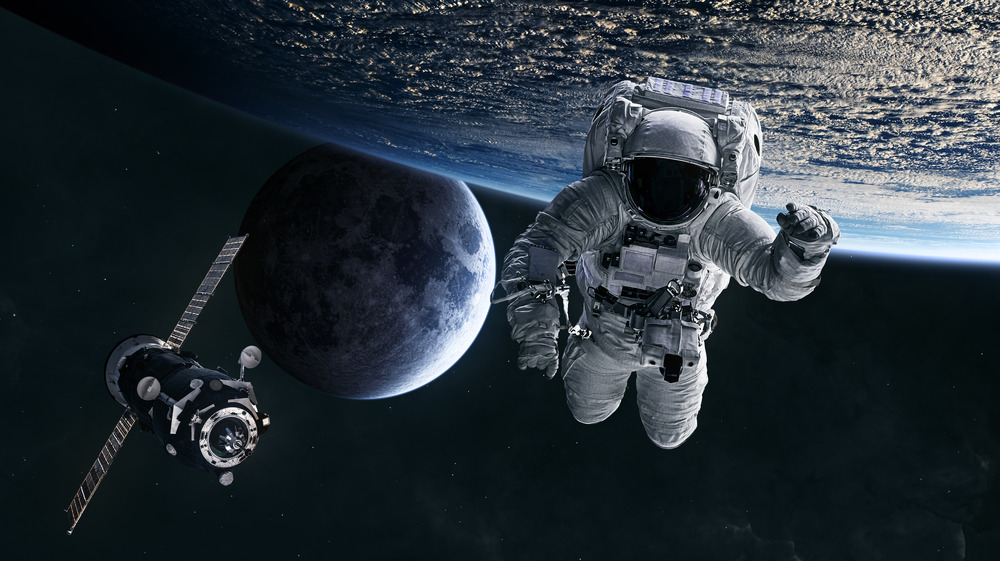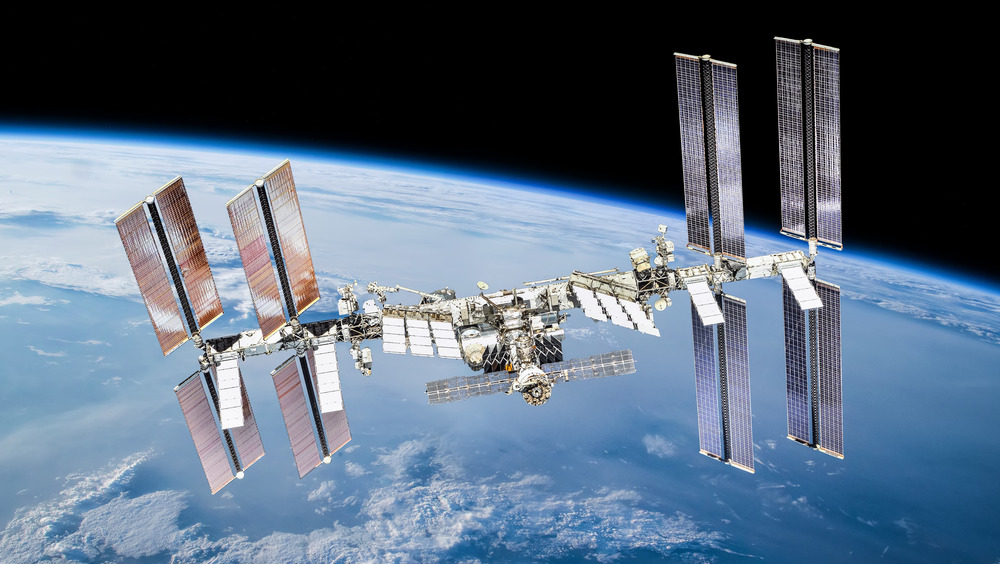The Real Reason Astronauts Float Isn't Due To Gravity
Boy, being an astronaut sure does look fun. What with all those years of classes, living in claustrophobic quarters, sleeping in an upright coffin, losing muscle and bone mass, eating out of plastic bags... But at least weightlessness looks fun! Because there's no gravity, right? In space. That's why water stays spherical, and why surface tension (as this nifty YouTube video of CSA Astronaut Chris Hadfield shows) lets liquids in space cling to objects.
But hang on: there's still gravity on the International Space Station (ISS), you say? Why yes, the station remains within an altitudinal range of 200-250 miles away from the surface of Earth, as NASA says, which means that gravity is more or less the same as the gravity at your local Trader Joe's. In fact, gravity on the ISS is still 90 percent that of Earth. Meaning, a 200-pound dude on Earth weighs 180 pounds on the ISS. Nifty.
As it turns out, the ISS is not "in space" in the far-away way you might imagine. Rather, as Space tells us, it's lodged in one of the layers of Earth's atmosphere, the thermosphere, an area that starts about 56 miles (90 km) up, and ranges up to between 310 and 620 miles (500 and 1,000 km) away from the surface, where temperatures get really hot, but atmospheric density is really thin. This is above the mesosphere, by the way, where meteors get incinerated. And why do meteors get incinerated? Because Earth's gravitational force is pulling them in.
Astronauts are always falling towards Earth
So if Earth's gravitational pull encompasses the ISS, and the ISS is at an altitude around where meteors get pulled towards the planet, why does footage such as this YouTube video of astronauts playing weightless soccer depict what appears to be a zero-gravity environment?
Well, many of us have done that school experiment where you drop, say, a feather and a brick at the same time, right? Gravity, as a force, affects both of them equally, but factors such as drag (air resistance) and surface area to mass ratio make the feather land later. In a vacuum, though, all objects fall at the same velocity, known as "free fall." This is commonly denoted as the unit of measurement for acceleration 9.8 m/s2. This figure is unique to Earth, and the result of two factors: the Earth's mass, and its distance to objects affected its gravitational pull. Objects further away are affected less. For objects like the ISS, at their distance, this means 90 percent Earth's gravity.
So, why are folks on the space station floating? Because they're falling. They're falling at "free fall," in fact. And, they happen to be moving forward at a fast enough velocity — 17,500 miles per hour (over 28,000 km per hour) — to perfectly oppose the force of gravity that's pulling them towards Earth. And because they're all falling at the same speed, they all appear to each, relatively, to be floating.
Ain't science grand?

